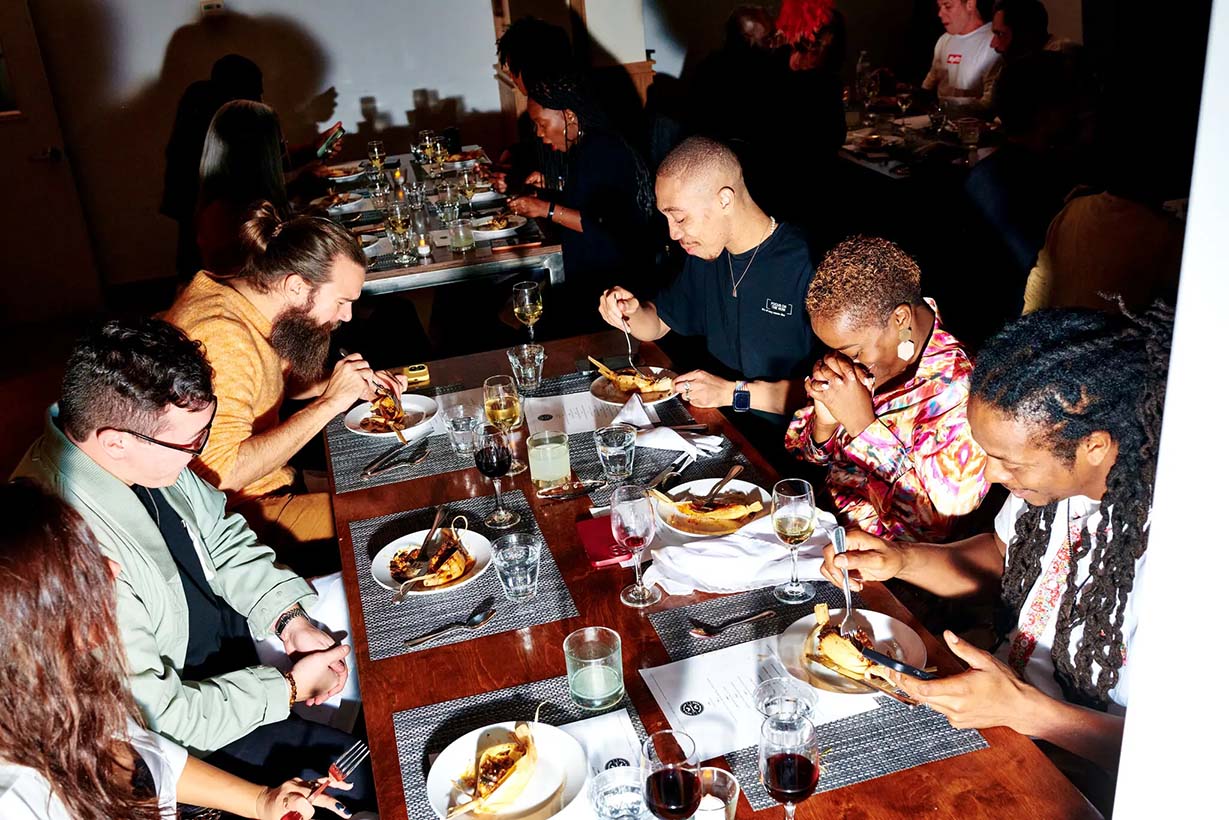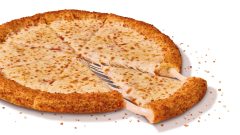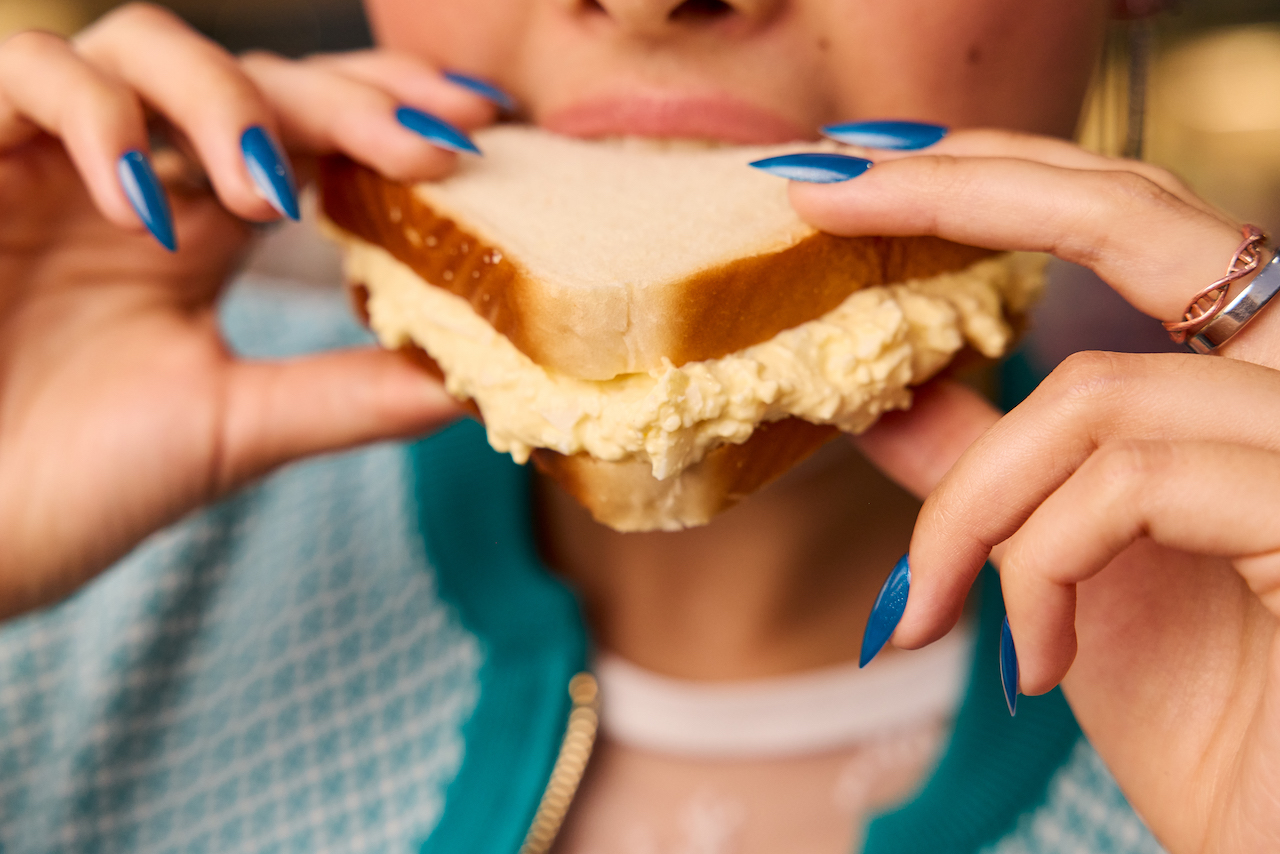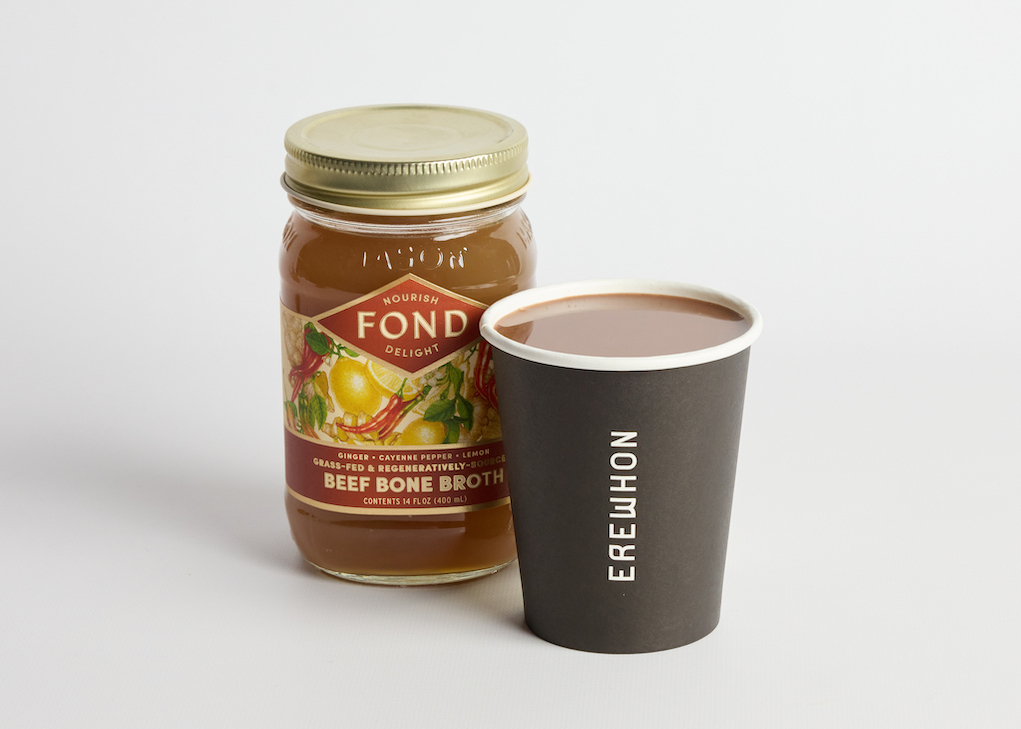Cannabis-Infused Dinners Are Lighting Up New York’s Secret Culinary Scene

Quietly lurking in the shadows of the underground dining scene, known only to the foodie elite which frequent invite-only soirees, are cannabis-infused experiences. Similar to wine and cocktails, pairing cannabis with food is becoming all the culinary rage.
New York-based Chef Miguel Trinidad, with his company, 99th Floor, has ventured into the great cannabis beyond, paving a way through the thickets of dining possibilities. He’s held dozens of cannabis dinners over the years, subverting expectations with a high-end approach.
Often serving five-courses, his culinary ambition has even inspired 10-course offerings. Through each course, he pairs cannabis in unique ways, like a duck tamale with infused-lard and mole sauce.
The NY Times tells of 99th Floor’s humble beginnings in 2015, which were reminiscent of rave culture with locations only being revealed the day of the event. As the years passed, 99th Floor’s recipe would be refined into the professionally run, intelligent, fine dining experience it is today.

Food stylist Halley Zelicoff recalls attending Mr. Trinidad’s first dinner, curiously held in a sub-basement of a warehouse. To enter, guests had to walk past a motorcycle gang’s headquarters into a freight elevator. “I was sitting next to a brain surgeon,” she recounted to the NYT. “My mind was blown. I had never experienced anything like that before.” Since then, Zelicoff has been to 30 99th Floor dinners.
While cannabis is more commonplace nowadays, it’s still illegal in many states. As a result, chefs who cook with cannabis operate in what’s known as the “gray area.” In other words, 99th Floor events usually take place in someone’s loft or garage. Still private, attendees consist of a trustworthy mailing list while first-timers need recommendations for entry.
A native New Yorker raised on the Lower East Side, story has it Mr. Trinidad was born in a taxi. Marijuana was illegal in all 50 states when he tried it for the first time at 14. His journey towards becoming a chef would begin at age 17, when he started working in kitchens. Over the years he’d open acclaimed restaurants like Maharlika and Jeepney. Now at age 49, he says his aim for 99th Floor was to “take the stigma away from a super-stoned experience,” to “elevate” it.
“It’s very much like drinking a bottle of wine,” Trinidad told the NYT over coffee several days before the dinner. “You’d sip on a bottle of wine over the course of a few hours, you’d get warm, feel better, feel good. Same thing with cannabis. In small doses, you can get all the euphoria, all the benefits from it, without the onset of panic.”

In a curated environment that’s relaxed with a tinge of adventure, people attending his dinners typically ingest roughly 20 to 25 milligrams, about equal to a bottle of wine according to Mr. Trinidad.
In his earlier days, while exploring the cannabis dining scene, he recalls 30 overly-high strangers on a rooftop, not interacting due to strong dosages in the food. From witnessing that, he discovered the importance of getting the dosage right.
On the growing New York scene of cannabis dinners, one could easily attend several within a month. Unlike 99th Floor, some even operate from established locations. HighGarden, a Tribeca cannabis lounge, holds events out of a restaurant space.
“They’re happening everywhere in the city already,” Jackie Conroy revealed to the NYT, one of the owners of HighGarden. “It’s been very low-key.”
Damian Fagon, the chief equity officer of the New York State Office of Cannabis Management, says it’s accurate to assume hundreds of cannabis-centric dining events occur every month.
Each has their own approach to presentation. HighGarden for example places vaporizers filled with cannabis on each table for patrons to sip like wine. For their event, each place setting included a black box of six Prëst vape pens, a sponsor for the evening. Pens with different terpenes were selected to complement the various courses.

Canadian-born Travis Petersen, a self-taught chef, has made vape orbs and pens an essential part of his dinners. His foray into weed dining began in 2018 when he decided to convert his home temporarily into a restaurant. The experiment consisted of five seatings of a dozen people every two hours for four days. Guests were charged between $200 to $300 for the experience.
Currently, Peterson is on a seven-week tour of eight states, staging legalized cannabis dinners while promoting his new book, “Introduction to Culinary Cannabis.” Later this month he will hold a residency at HighGarden, and host events every six to eight weeks.
Leaving behind a “miserable” career at an oil and gas company, despite earning a six-figure salary, Peterson admitted to the NYT that his former life left a, “Giant hole in me and nothing would fill it.” After being laid off, he used his severance to pursue his current dream. “Doing this culinary cannabis has brought me all the happiness in life.”
Chef Peterson likes to cater THC doses to his individual patrons, unlike Trinidad, whose dishes are equally dosed. Guests are given the option of a dose level for the evening, which ranges from 1 to 5. 1 actually equates to 5 milligrams of THC while 5 is 100 milligrams.

While Chef Trinidad infuses his dishes with cannabis, Peterson used CBD-infused shrimp salt and THC-infused prickly-pear gel. For each, different approaches still result in lasting effects that typically arise soon after the meal is over.
“I think it’s mostly the after effect,” a woman named Michaela explained to the NYT, who had attended three of Trinidad’s meals. “It’s not so much the taste. I guess everybody’s different, but for me, I get a warming sensation, the lights get really bright.” And then she addressed the great irony of a cannabis dinner. “You do get the munchies afterward,” she said. “The first time, me and my friend went for pizza right after.”
While cannabis dinners are compared to wine pairings, most guests choose to indulge in one or the other, but rarely both. Peterson, for example, never serves cocktails or wine at his dinners.

Sharing his dinner experience with the NYT he said, “The difference between doing a dinner with a beverage pairing and a dinner with a cannabis pairing is quite huge. When you’re drinking, you get a little drunk, you get a little out of hand, sometimes you say things you don’t mean. At the end of the night, if people are drinking, they don’t get up and leave right away. They like to sit and hang out. Cannabis people are polite, they’re excited to be there. When the dinner’s over, people just get up, they pay their bills and go.”
Mr. Fagon of the Cannabis Management Office is hoping to introduce initial regulatory paperwork for cannabis lounges and dining establishments next year. “We have to create the framework that makes sense for them,” he told the NYT, pushing for the licensing to match the current cannabis dining scene.
When the application process begins, Chef Trinidad intends to be one of the first to sign up. Chef Peterson, on the other hand, intends to travel the world, sharing his cookbook and mentoring others on cannabis education. While he has no interest in running a restaurant, he knows New York will be the catalyst for the future of cannabis dining.






















